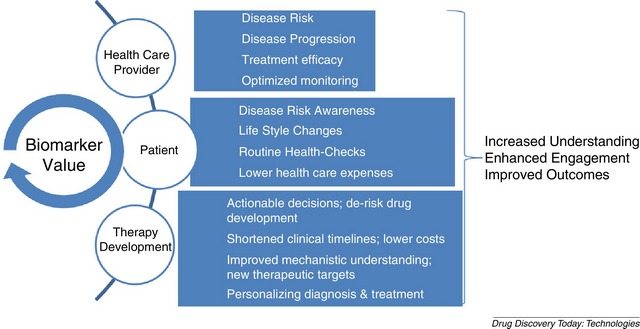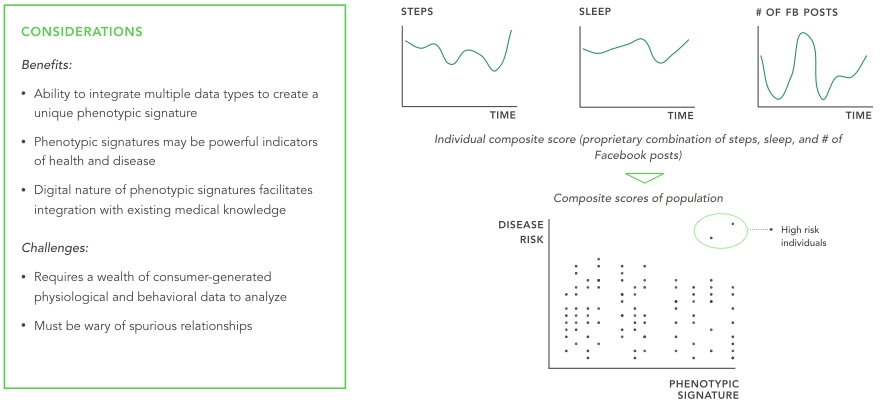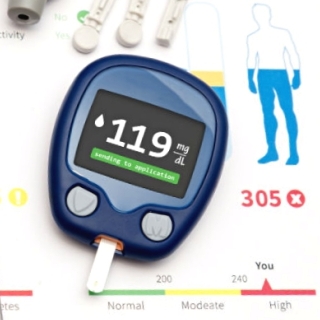Digital Biomarkers in the Precision Medicine of Diabetes
Kailesh Gopalbhai
Digital Health Innovation and Strategy Partner
Type 2 diabetes mellitus (T2DM) is a growing public health concerns affecting 422 million people in 2014 (1). Sedentary lifestyle, poor diet and obesity are the major modifiable factors leading to T2DM and the targets of most disease management programs (2). Standard treatments focus on the reduction of diabetes symptoms, elimination of its risk factors and the prevention of its comorbidities, thereby increasing survival and quality of life. In well-controlled blood glucose levels, T2DM complications are far less common and severe in people (3, 4).
Biomarkers such as HbA1c can play an important role for T2DM screening, diagnosis and prognosis, risk assessment, therapy selection and response to disease management (5). However, the effects of food or drug treatment on short-term glucose levels illustrates the need for more granular metrics beyond HbA1c (5).
In T2DM, a multidimensional approach to lifestyle risk factors (6) and treatment response (7) is needed to understand in new ways and characterize the disease conditions, trajectories and the associated comorbidities.
Digital biomarkers are consumer-generated physiological and behavioral measures collected through connected digital tools.
The Value of Biomarkers in Healthcare

Clinical guidelines that drive medical decisions are used across diverse T2DM populations (9), but digital biomarkers offer a more personalized, integrated and adaptive approach (10). Digital biomarker insights could deliver the best interventions at the right time to specific patients, as well as identify, evaluate and manage higher risk, expensive patients (11). Moreover, as digital biomarkers are generated in real-world settings, they provide a patient’s daily health status between medical visits. They can be used as longitudinal data, analyzed with clinical and molecular information, and returned to the healthcare professional in real-time, enabling precise, effective and patient-specific health interventions (12).
Integrated panels of digital and traditional biomarkers offer an opportunity to better explain variance in human health and disease (8).

Wireless and mobile technologies provide new sources of real-time, continuous biological, behavioral and environmental data (13). Mobile health improves the understanding of health and disease, especially when integrated with data from electronic medical records, biomarkers and genomics (13). These multidimensional data sets have the potential to improve our understanding of health behavior and to inform the development of prevention and treatment programs that are adaptive, preventive and personalized (14, 15).
How, where and when are the digital biomarkers important, biologically relevant, clinically significant, useful to the patient, or meaningful to ultimate outcomes?
The adoption of digital biomarkers requires validation to confirm its specificity, sensitivity, and positive and negative predictive values. Thus, longitudinal evaluation alongside standard clinical measures and/or patient-reported outcomes will be needed to establish use context, analytic validity, clinical validity, and clinical utility by these digital biomarkers (12, 16).
Use Context
A digital biomarker might be used in diverse contexts. These use contexts include risk stratification, differential diagnosis, prognosis, prediction and/or monitoring.
Analytic Validity
Analytic validity shows the accuracy, reliability and reproducibility of the digital biomarker as demonstrated by preanalytic, technical and scoring methods.
Clinical Validity
Clinical validity examines the ability of a digital biomarker to separate one population into two or more groups with either biological, clinical or behavioral difference.
Clinical Utility
Clinical utility demonstrates that the digital biomarker provides a favorable profile of benefits to risks, versus the traditional clinical measures.
In the future, the human and financial cost of chronic diseases will be even greater. As the role of health monitoring, wearables and digital health in healthcare evolves, the benefits of digital biomarkers to monitor patient health status at scale, diagnose disease earlier, and predict outcomes become increasingly apparent (17). Using a multidisciplinary approach, digital biomarkers offer a closer integration with a consumer’s lifestyle, and can be used to deliver proactive treatments and/or behavioral interventions with social support to activate, educate and engage consumers (18).
References
- WHO | Global report on diabetes. WHO. http://www.who.int/diabetes/global-report/en/
- Yates T, Khunti K, Bull F, et al. 2007. The role of physical activity in the management of impaired glucose tolerance: a systematic review. Diabetologia. 50(6):1116–26
- Tuomilehto J, Lindström J, Eriksson JG, et al. 2001. Prevention of Type 2 Diabetes Mellitus by Changes in Lifestyle among Subjects with Impaired Glucose Tolerance. New England Journal of Medicine. 344(18):1343–50
- Group DPPR. 2002. Reduction in the Incidence of Type 2 Diabetes with Lifestyle Intervention or Metformin. New England Journal of Medicine. 346(6):393–403
- Kohnert K-D, Heinke P, Vogt L, et al. 2015. Utility of different glycemic control metrics for optimizing management of diabetes. World J Diabetes. 6(1):17–29
- Poveda A, Chen Y, Brändström A, et al. 2017. The heritable basis of gene–environment interactions in cardiometabolic traits. Diabetologia. 60(3):442–52
- Böhm A, Weigert C, Staiger H, et al. 2016. Exercise and diabetes: relevance and causes for response variability. Endocrine. 51(3):390–401
- The Emerging Influence of Digital Biomarkers on Healthcare. Rock Health. http://rockhealth.com/reports/the-emerging-influence-of-digital-biomarkers-on-healthcare/
- Sen S, Chakraborty R, De B. 2016. Biomarkers of Diabetes and Diabetic Complications. In Diabetes Mellitus in 21st Century, pp. 101–24. Springer, Singapore
- Meister S, Deiters W, Becker S. 2016. Digital health and digital biomarkers – enabling value chains on health data. Current Directions in Biomedical Engineering. 2(1):577–581
- Dorsey ER, Marks Jr WJ. 2017. Verily and Its Approach to Digital Biomarkers. Digital Biomarkers. 1:96-99
- Arnerić SP, Cedarbaum JM, Khozin S, et al. 2017. Biometric monitoring devices for assessing end points in clinical trials: developing an ecosystem. Nature Reviews Drug Discovery. 16(10):736
- Hird N, Ghosh S, Kitano H. 2016. Digital health revolution: perfect storm or perfect opportunity for pharmaceutical R&D? Drug Discovery Today. 21(6):900–911
- Chan M, Estève D, Fourniols J-Y, et al. 2012. Smart wearable systems: Current status and future challenges. Artificial Intelligence in Medicine. 56(3):137–56
- Kaufman N, Khurana I. 2016. Using Digital Health Technology to Prevent and Treat Diabetes. Diabetes Technology & Therapeutics. 18(S1):S-56
- Pollak J, Birnbaum ML, Choudhury T, et al. 2017. Panel: Designing Studies for Feasibility Testing, Refinement and Validation of Digital Biomarkers In Proceedings of the 1st Workshop on Digital Biomarkers (Digital Biomarkers ’17). ACM, New York, NY, USA, 37-37
- Digital Biomarkers a Future Driver of Health Data – AACC.org. https://www.aacc.org/publications/cln/cln-stat/2016/march/17/digital-biomarkers-a-future-driver-of-health-data
- 18. Free C, Phillips G, Galli L, et al. 2013. The Effectiveness of Mobile-Health Technology-Based Health Behaviour Change or Disease Management Interventions for Health Care Consumers: A Systematic Review. PLOS Medicine. 10(1):e1001362

